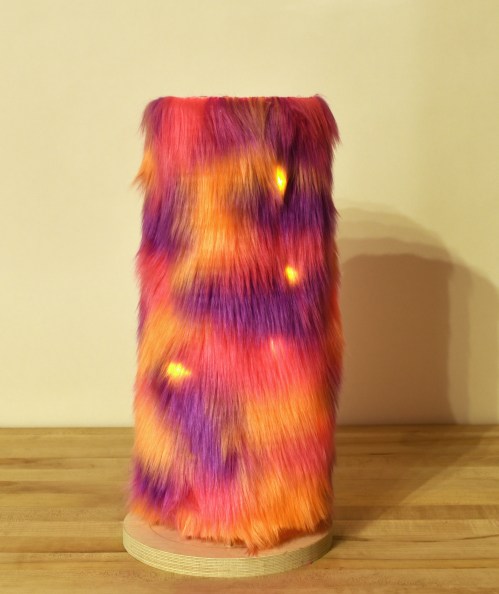Update 2: Redid the circuit and got the lamp to light up!
My main takeaway from this project: know what I’m after, don’t get distracted by amazing plush. My original goal was to experiment with light diffusion using acrylic rods and different placement of LEDs. I should’ve known that the plush I chose for my final model was too thick to work with acrylic or LEDs placed at the core of the lamp. Will not let amazing plush take me off-course next time!

Voila!

Placing LEDs through the holes in the fabric

Got so much better at soldering!

My original model did not light up. At first I thought:
The problem is with this parallel circuit. Each individual set lit up fine before being soldered together, but when soldered together, they didn’t light up. It’s probably because of the poor connection. I’ll redo it and get it to work.
Update 1: Found out the problem.
I checked the circuit with a power supply and a conductivity meter. It turns out the problem was not the connection but the LEDs. I designed it to be 4 series sets of 5 parallel circuits, so they would resist each other, and no resistor would be needed. However, I forgot that the whole series circuit was required when I plugged in just one set of 5 parallel circuits in the 9V battery, and this killed all the LEDs.

























